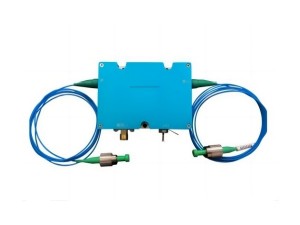BaTiO3 substrate
Description
BaTiO3 single crystals have excellent photorefractive properties, high reflectivity of self-pumped phase conjugation and two-wave mixing (optical zoom) efficiency in optical information storage with huge potential applications, which is also an important substrate materials.
Properties
| Crystal Structure | Tetragonal ( 4m) : 9℃ < T < 130.5 ℃a=3.99A, c= 4.04A , |
| Growth Method | Top Seeded Solution Growth |
| Melting Point(℃) | 1600 |
| Density(g/cm3) | 6.02 |
| Dielectric Constants | ea = 3700, ec = 135 (unclamped)ea = 2400, e c = 60 (clamped) |
| Index of Refraction | 515 nm 633 nm 800 nmno 2.4921 2.4160 2.3681ne 2.4247 2.3630 2.3235 |
| Transmission Wavelength | 0.45 ~ 6.30 mm |
| Electro Optic Coefficients | rT13 = 11.7 ?1.9 pm/V rT 33 =112 ?10 pm/VrT 42= 1920 ?180 pm/V |
| Reflectivity of SPPC( at 0 deg. cut ) | 50 - 70 % ( max. 77% ) for l = 515 nm50 - 80 % ( max: 86.8%) for l = 633 nm |
| Two-wave Mixing Coupling Constant | 10 -40 cm-1 |
| Absorption Loss | l: 515 nm 633 nm 800 nma: 3.392cm-1 0.268cm-1 0.005cm-1 |
BaTiO3 Substrate Definition
BaTiO3 substrate refers to a crystalline substrate made of the compound barium titanate (BaTiO3). BaTiO3 is a ferroelectric material with a perovskite crystal structure, which means it has unique electrical properties, making it ideal for a variety of applications.
BaTiO3 substrates are often used in the field of thin film deposition, and are specially used to grow epitaxial thin films of different materials. The crystalline structure of the substrate allows precise arrangement of atoms, enabling the growth of high-quality thin films with excellent crystallographic properties. The ferroelectric properties of BaTiO3 also play a crucial role in applications such as electronics and memory devices. It exhibits spontaneous polarization and the ability to switch between different polarization states under the influence of an external field.
This property is used in technologies such as non-volatile memory (ferroelectric memory) and electro-optical devices. In addition, BaTiO3 substrates have applications in various fields such as piezoelectric devices, sensors, actuators, and microwave components. The unique electrical and mechanical properties of BaTiO3 contribute to its functionality, making it suitable for these applications.












